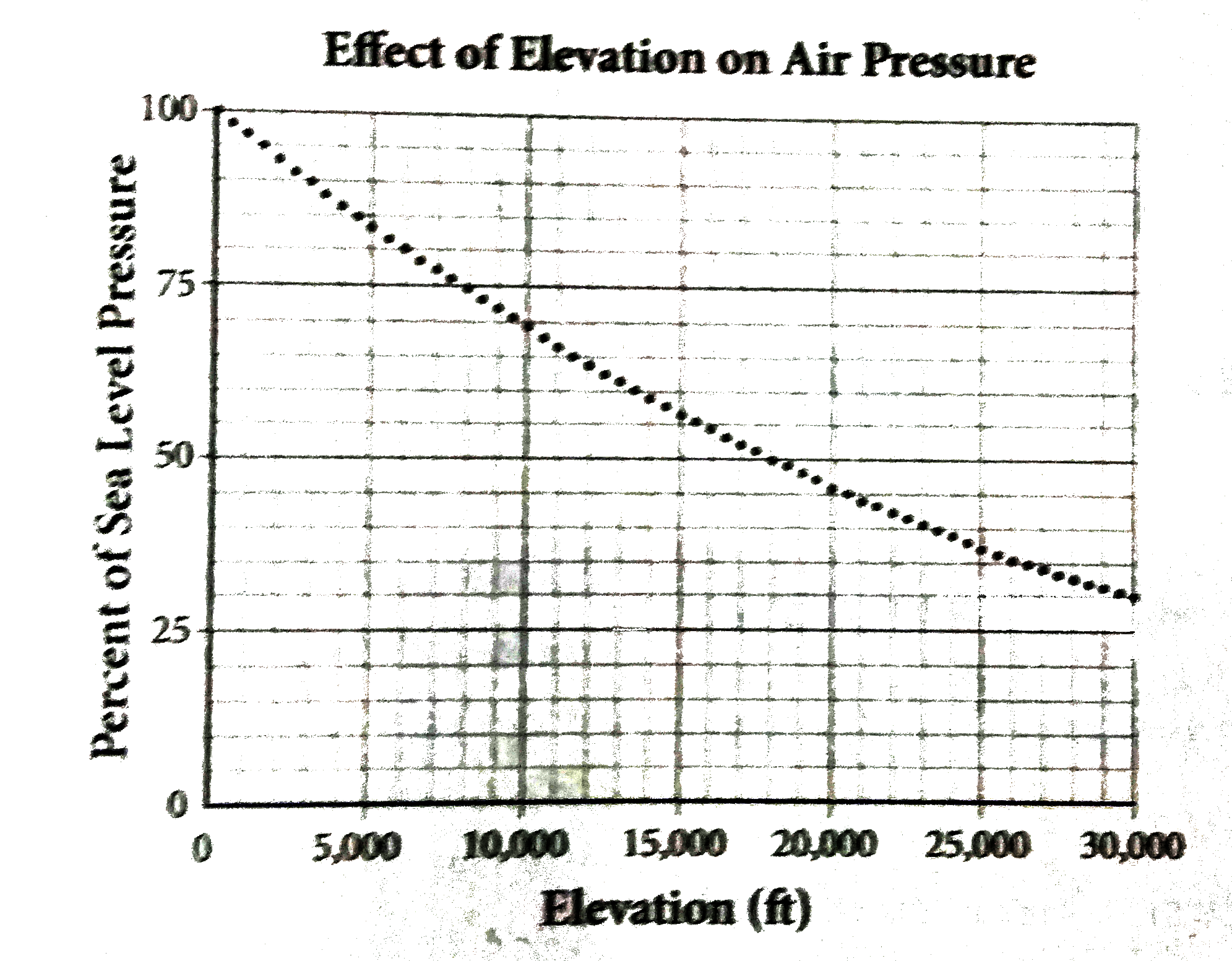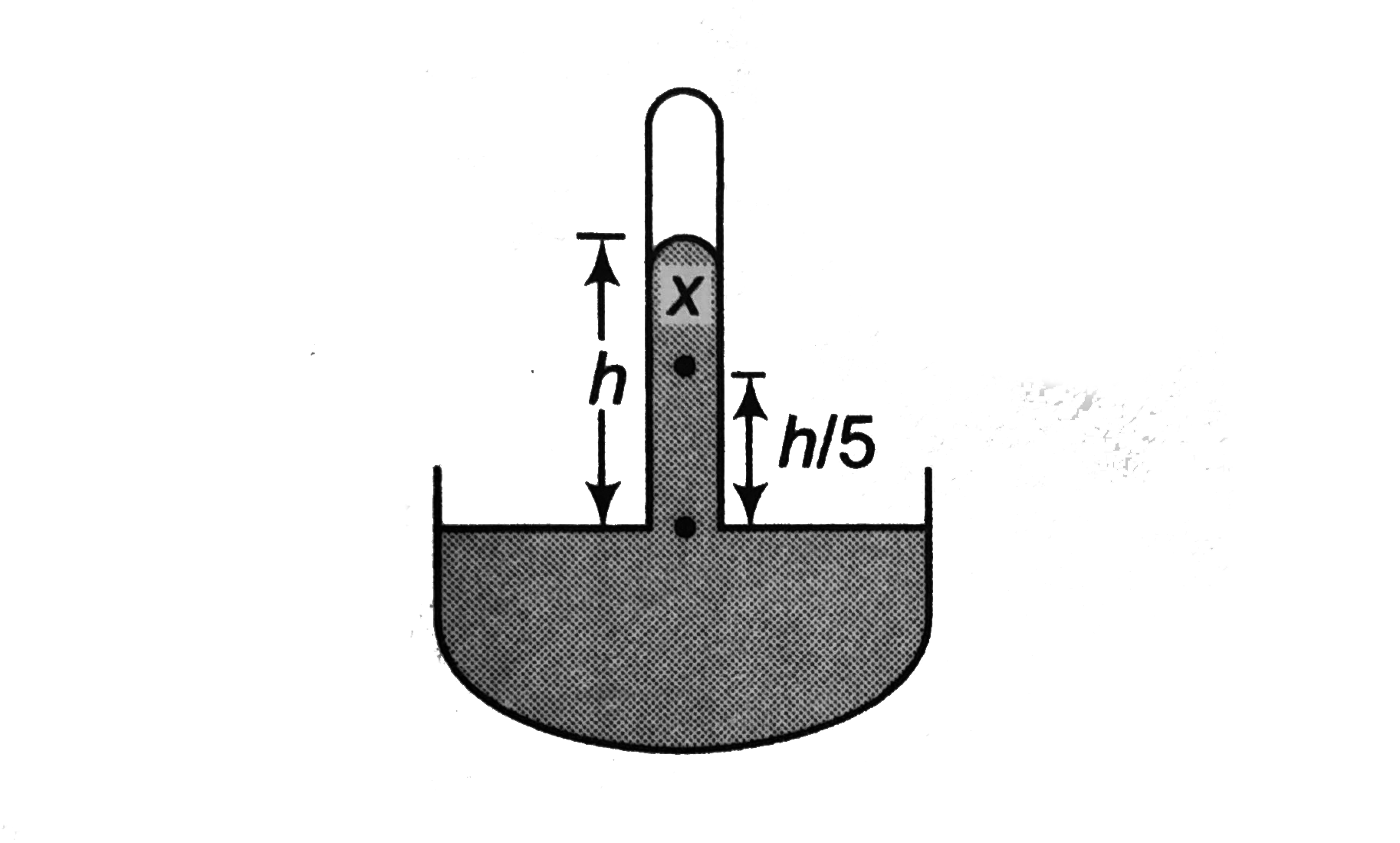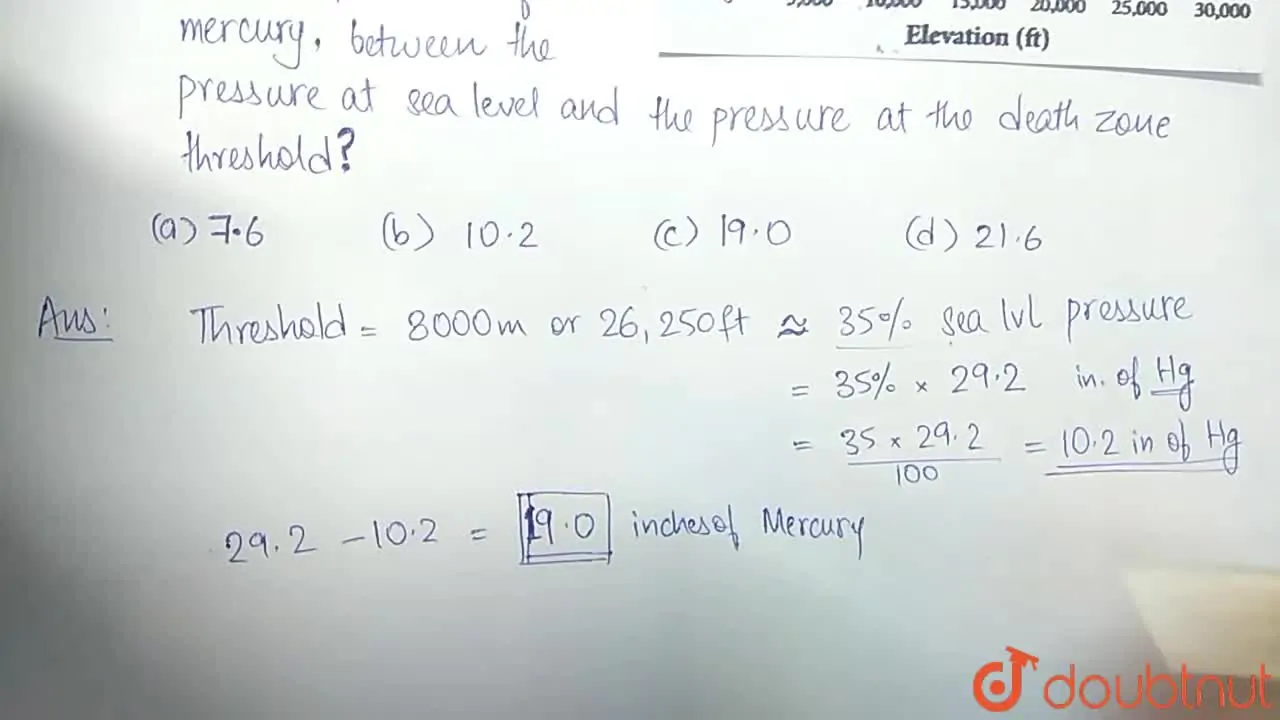As the elevation above sea level increase, the corresponding air pressure decrease. A scatterplot comparing elevations, in feet, to air pressure, as a percent of sea level pressure, is shown balow.

Q. Air pressure is sometimes measured in inches of mercury. If sea level air pressure measures as 29.2 inches of mercury, what is the approximate difference, in inches of mercury, between the pressure at sea level and the pressure at the death zone threshold?
7.6
10.2
19.0
21.6
The correct Answer is:C
Difficult: Hard
Category: Problem Solving and Data Analysis/ Scatterplots
Strategic Advice: When questions are presented in a "set", you can sometimes use your answer from the previous question to answer the next one. However, make sure you answer the right question.
Getting to the Answer: You need to find the difference between the two indicated pressures. You know that the air pressure at the death zone threshold is approximately 35% of sea level air pressure from the previous question. Find 35% of 29.2 by multiplying: 0.35×29.2=10.2. Be careful here, as the question asks for the difference between this pressure and sea level pressure, which is 29.2-10.2=19.0. (C) is the correct answer.
Related Playlists
Similar Questions
As the elevation above sea level increase, the corresponding air pressure decrease. A scatterplot comparing elevations, in feet, to air pressure, as a percent of sea level pressure, is shown balow.

Q. Elevations above 8,000 meters are said to be in the "death zone", a range of elevations in which oxygen levels are not high enough to sustain human life. What is the approximate air pressure (as a percent of sea level pressure) at the death zone threshold?( Note: 1 meter=3.28 feet)View SolutionWhat is the value of atmospheric pressure at sea level and on Mount Everest?
View SolutionWhat is the pressure at sea level ?
View SolutionWhat is the difference in height between a point 270 m above sea level and 80 m below sea level ?
View SolutionThe height of mercury barometer is h when the atmospheic pressure is 105Pa. The pressure at x in the shown diagram is
 View Solution
View SolutionThe vertical height of mercury which a simple barometer can support at sea level is:
View SolutionA manometer reads the pressure of a gas in an enclosure as shown in the figure. The absolute and gauge pressure of the gas in cm of mercury is (take atmospheric pressure =76 cm of mercury)
View SolutionAs we go higher, the density of air increases and hence pressure decreases
View SolutionIf more air is pushed in a soap bubble the pressure in it
View SolutionSuppose the pressure at the surface of mercury in as barometer tube is P1 and the pressure at the surface of mercury in the cup is P2.
View Solution


